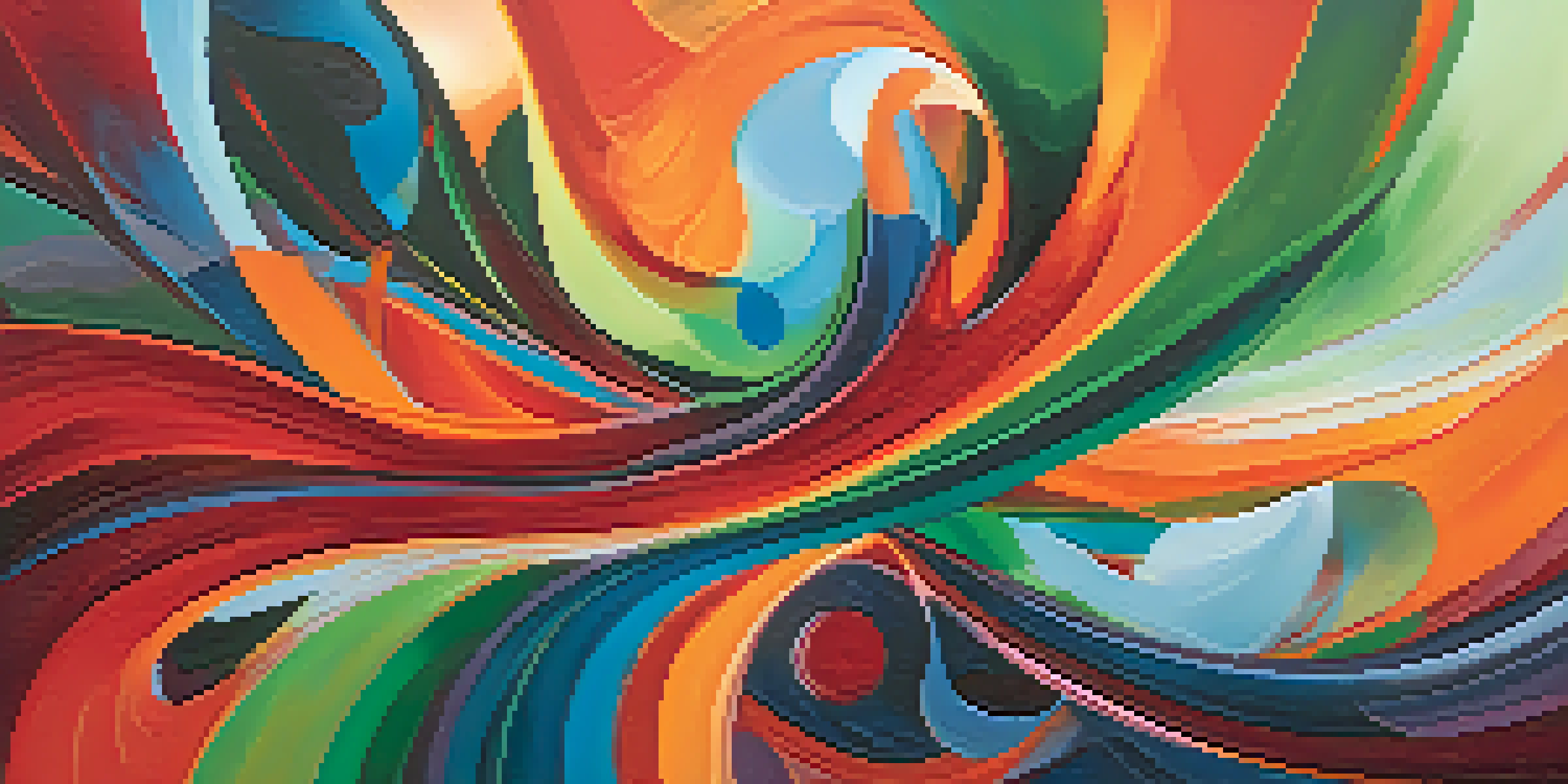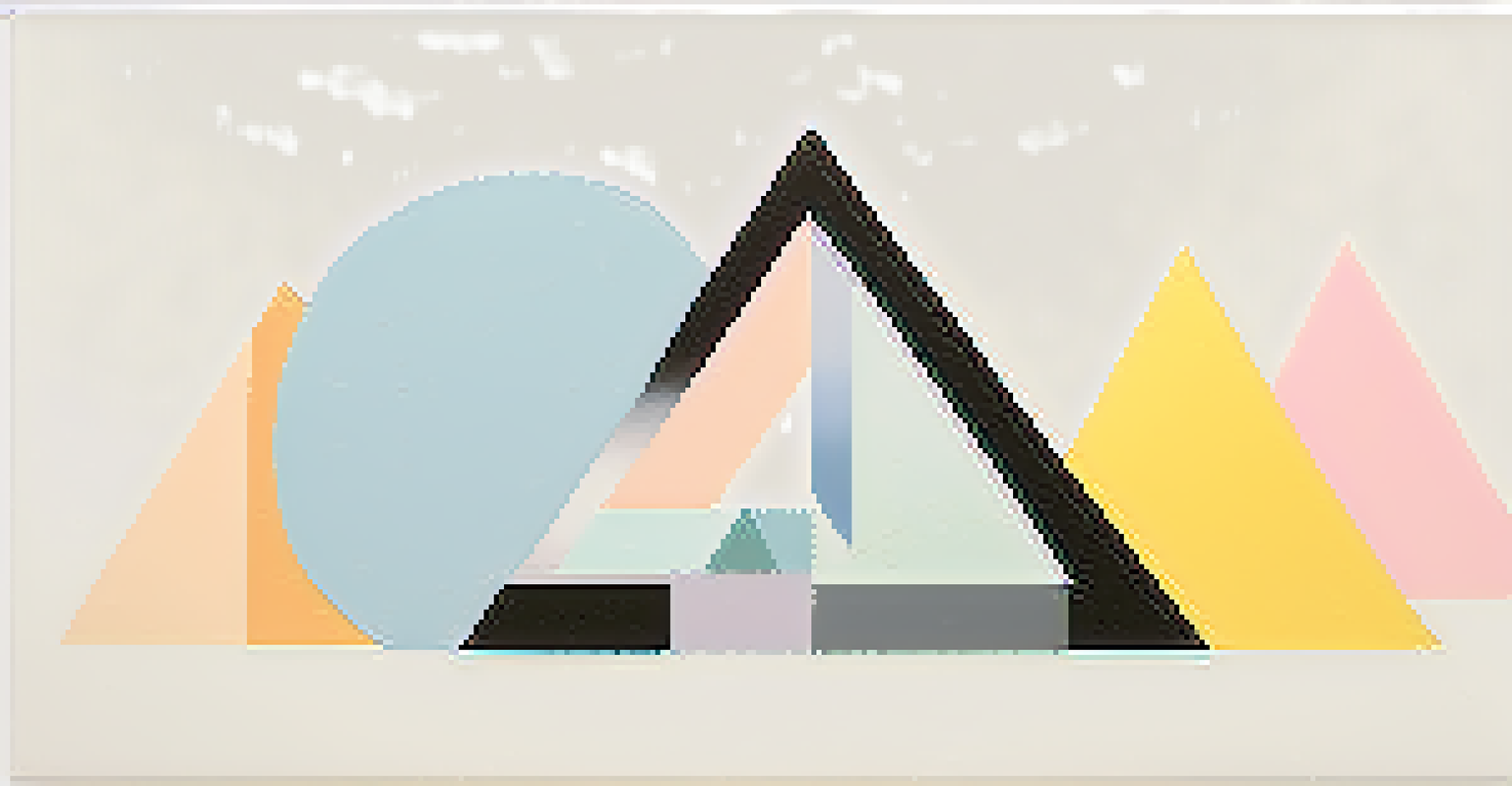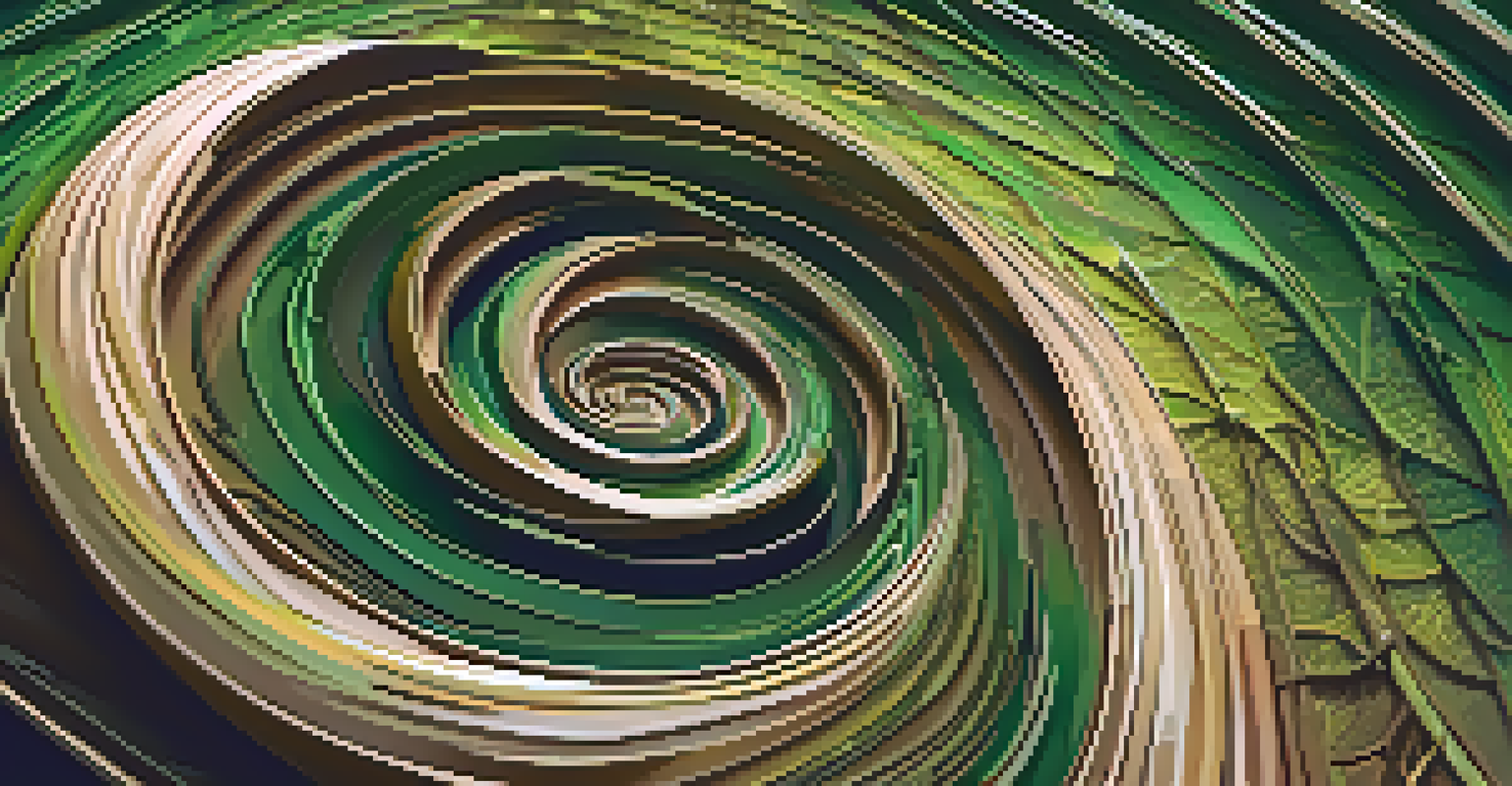Abstract Forms: Symbols and Their Stories

Understanding Abstract Forms and Their Significance
Abstract forms are visual representations that go beyond literal interpretations. They allow artists and creators to express complex ideas and emotions in a simplified manner. For instance, a swirling circle might convey chaos or movement, while a sharp triangle could symbolize stability or danger.
Abstract art is a fundamental means of expression, allowing artists to convey emotions and ideas that are often beyond the scope of words.
These forms often evoke personal interpretations, encouraging viewers to connect with the artwork on a deeper level. The beauty of abstract art lies in its ambiguity; it invites each person to bring their own experiences and feelings into the viewing experience. This open-endedness can spark conversations and inspire new thoughts.
Historically, abstract forms have played a crucial role in various art movements, from Cubism to Abstract Expressionism. Artists like Wassily Kandinsky and Piet Mondrian used shapes to convey emotions and philosophies, paving the way for modern interpretations of visual language.
The Language of Symbols: Communicating Through Shapes
Symbols serve as a universal language, transcending cultural and linguistic barriers. For example, a heart shape universally represents love, while a dove often symbolizes peace. These simple shapes carry profound meanings, making them powerful tools for communication.

In abstract forms, symbols often take on new meanings, dependent on the context in which they are presented. A circle in one artwork might represent eternity, while in another, it could signify community or wholeness. This fluidity allows for rich storytelling through visual means.
Abstract Art's Emotional Impact
Abstract forms evoke a wide range of emotions, allowing viewers to connect with art on a personal level.
Understanding the symbolism behind these shapes can deepen our appreciation of art. By exploring the stories they tell, we gain insight into the artist's intention and the cultural context surrounding the work, enhancing our overall viewing experience.
Cultural Interpretations of Abstract Symbols
Different cultures interpret abstract symbols uniquely, informed by their histories and values. For instance, a spiral might represent growth and evolution in some societies, while in others, it could symbolize a journey or the passage of time. This diversity enriches our understanding of art and its impact.
The more I paint, the more I realize that I am not just creating a picture, but a feeling that can only be expressed through abstraction.
As globalization continues to influence art, we see a fascinating blend of symbols from various cultures. Artists often incorporate elements from their heritage, creating a tapestry of meanings that reflect both personal and collective narratives. This fusion can lead to innovative interpretations of abstract forms.
Exploring cultural contexts helps us appreciate the depth of abstract symbols. By recognizing these varying interpretations, we can foster a greater respect for the diverse perspectives that shape our understanding of art.
Emotional Resonance of Abstract Forms
Abstract forms can evoke a wide range of emotions, often without the need for recognizable subjects. The use of color, shape, and composition creates a visceral experience that resonates with viewers. For example, vibrant reds and oranges might evoke passion or anger, while cool blues and greens can inspire calmness and reflection.
Artists harness this emotional power to connect with audiences on a deeper level. By manipulating these elements, they can create feelings of joy, sadness, or even nostalgia. This emotional landscape allows viewers to experience art not just visually but also emotionally.
Cultural Diversity in Symbolism
Different cultures interpret abstract symbols uniquely, enriching our understanding of art's meanings.
Understanding the emotional resonance of abstract forms enhances our appreciation of their complexity. It reminds us that art is not just about what we see but also about how it makes us feel, creating a lasting impact long after we've left the gallery.
The Role of Abstract Art in Contemporary Society
In today's fast-paced world, abstract art offers a refreshing escape from reality. It encourages us to slow down, reflect, and engage with our thoughts and emotions. This intentional engagement can be a form of mindfulness, allowing us to process our experiences and feelings more effectively.
Moreover, abstract art has found its place in various aspects of modern life, from interior design to advertising. Its versatility makes it appealing, as it can evoke specific moods and atmospheres without being overtly literal. This adaptability speaks to its continued relevance in our visual culture.
As society evolves, so too does the interpretation of abstract forms. Artists continue to push boundaries, exploring new materials and methods, ensuring that abstract art remains a dynamic and integral part of our cultural landscape.
Creating Your Own Abstract Expressions
Embracing abstract art doesn't require formal training; anyone can express themselves through simple shapes and colors. Start by experimenting with different materials, whether it's paint, digital tools, or even collage. Let your emotions guide your choices, focusing less on the outcome and more on the process.
Consider what you want to convey through your work. Is there a feeling you want to express? A story you wish to tell? Allow your intuition to drive your creative decisions, as this can lead to unexpected and authentic results. The beauty of abstract art lies in its freedom.
Future of Abstract Art
Advancements in technology and social media are transforming how abstract art is created and experienced.
Sharing your abstract creations with others can also foster connection. Discussing your work can lead to new insights and interpretations, enriching both your experience and that of your audience. After all, art is a conversation, and every piece has a story worth telling.
The Future of Abstract Forms in Art
As technology advances, the realm of abstract art is expanding in exciting ways. Digital mediums allow artists to push the boundaries of traditional forms, exploring virtual reality and interactive installations. This evolution promises to reshape how we interact with abstract symbols and their stories.
Moreover, the rise of social media has created new platforms for artists to share their work and reach diverse audiences. This accessibility encourages a broader dialogue about abstract art, fostering appreciation and understanding among various demographics. The global art community is more interconnected than ever.

Looking ahead, it's clear that abstract forms will continue to evolve, reflecting societal changes and technological advancements. As artists explore new frontiers, we can expect to witness innovative interpretations of symbols and stories that challenge our perceptions and ignite our imaginations.